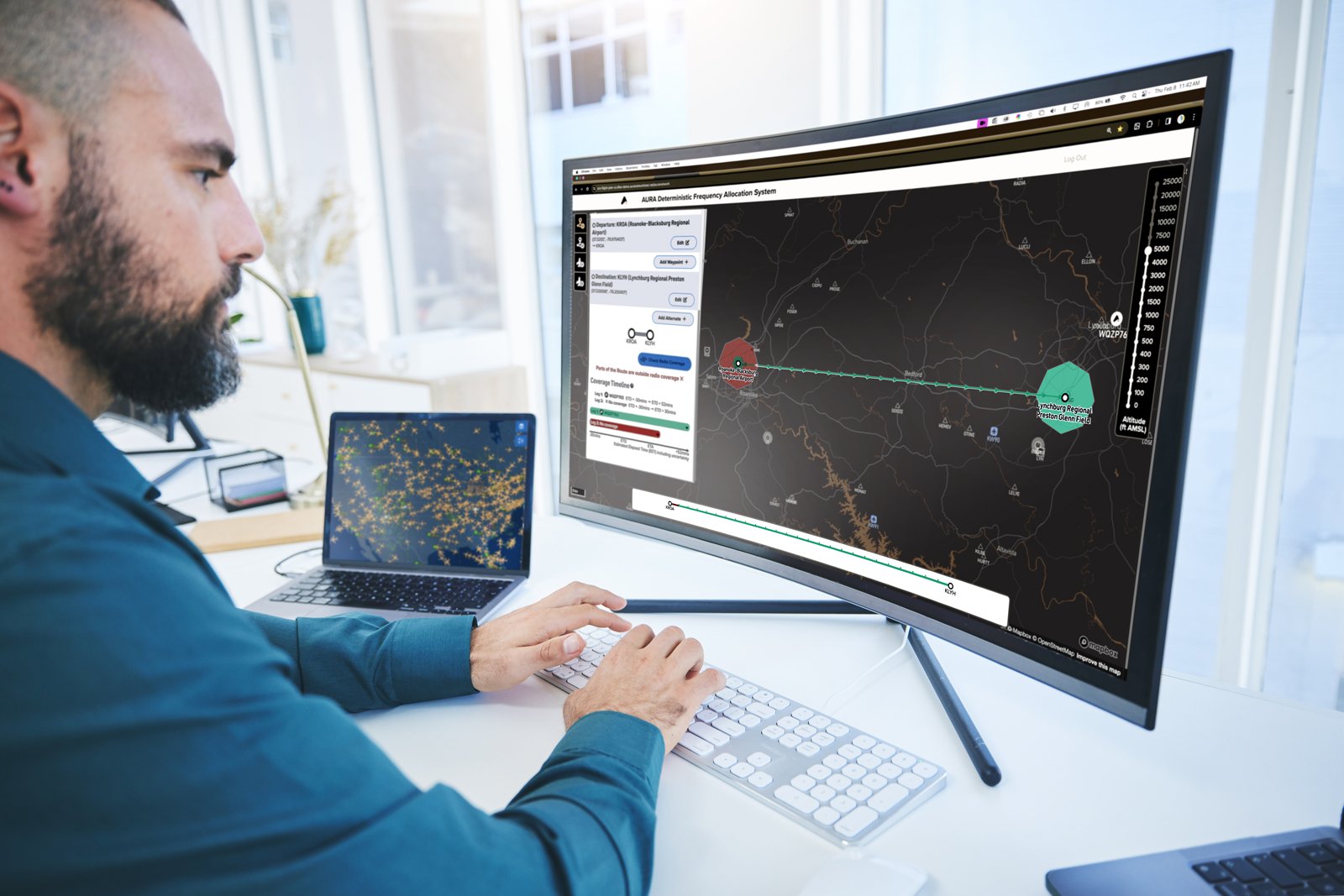
AURA’s full-stack suite of infrastructure solutions enable advanced levels of autonomy and safety
Key features of AURA’s unique network
Our secret sauce is spectrum – radio frequencies authorized and assigned by the Federal Communications Commission to benefit the entire aviation ecosystem.
AURA’s network – built on our own licensed spectrum – is authorized to provide service throughout the U.S., including substantial coverage of coastal U.S. waters, AK, HI, PR, and Guam. The network has no altitude restrictions and has been built with multiple redundancies for a safety-critical system designed to support general and advanced aviation operations.
Commercial site locations are driven by customer requirements.
FCC-licensed spectrum for general and advanced aviation
AURA holds exclusive 450 MHz licenses for commercial UAS operations.
Scalable, secure, and future-proof network design
Foundational infrastructure has the ability to support multiple spectrum bands, including C-Band.
Modern, cloud-based infrastructure
High-reliability, fully redundant 5G Core has seamless integration between cloud and edge.
Ultra-reliable radio links
AURA’s band has exceptional propagation capabilities for a two-way predictable, deterministic signal.
Extremely low latency
Network architecture is designed to meet rigorous reliability and latency standards for voice.
‘Zero Trust’ privacy & security
Workflows avoid the internet to ensure data privacy and prevent ease of access by hostile actors.
AURA’s UHF radio systems
This first-generation radio is representative of AURA's commercial airborne radio.
In collaboration with industry-leading avionics manufacturers, AURA is developing regulatory-compliant ground and airborne radio systems that transmit voice and data over our 450 MHz band.
These radios are meticulously designed to meet stringent aviation requirements, including availability, continuity, latency, and integrity, as specified by RTCA’s DO-377B standards for command-and-control of aircraft by remote pilots.
In addition to supporting advanced air mobility operations, AURA’s airborne radios can serve general aviation's needs for voice and data communications, including in-flight operational messaging.
AURA’s airborne radios are available now for integration into aircraft, while the ground systems can be installed at customer hangars for test flights.
UHF radio performance standards have been established.
RTCA DO-406, developed by AURA and published by the industry’s premier Standards Development Organization (September 2024), outlines the Minimum Operational Performance Standards (MOPS) for UHF airborne radio systems supporting UAS C2 link systems.
Working with the Federal Aviation Administration (FAA), RTCA develops comprehensive, industry-vetted and endorsed standards that can be used as means of compliance with the agency’s regulations. DO-406 serves as the blueprint for avionics manufacturers building radios for aircraft operating on AURA’s network.

Our proprietary spectrum management system
Aviation relies on specific spectrum allocations for safe and efficient flight operations. These frequencies must not only be licensed but also fully dedicated to aviation. However, managing coverage and maintaining continuous communications links along flight routes are equally crucial. That’s where AURA steps in.
Our Dynamic Frequency Management System (DFMS) ensures deterministic service coverage for our 450 MHz spectrum. It allocates frequencies via either API or AURA’s UI. Notably, it can also be utilized by commercial or government stakeholders to provision service in other aviation-licensed bands. Here’s how it works:
Coverage Assurance: AURA’s DFMS ensures that coverage is allocated along entire flight routes, including identified contingencies. This is especially important for longer-range connections beyond visual line of sight (BVLOS) between aircraft and ground stations.
Safety and Reliability: Deterministic communications service delivery is essential for safe, reliable UAS flights. AURA’s DFMS ensures continuity, integrity, and end-to-end coverage. Regulators recognize this as a required feature for command-and-control (C2) networks.



